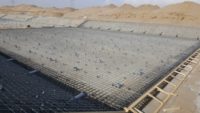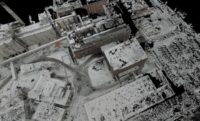A glimpse into the future is possible by reviewing ICON’s recent patent filings. The construction technology company was recently awarded a nearly $60-million NASA contract to research and develop space-based construction systems to support planned exploration of the moon and beyond.
ICON designed a 3D-printed mock-Martian base known as Mars Dune Alpha, where a crew of four have been living since July 2023 as part of a year-long simulation of a mission on Mars. ICON’s website proudly showcases a portfolio featuring a distinct section labeled “off-word construction,” replete with images resembling promotional posters for a forthcoming sci-fi blockbuster. However, as any ardent Star Wars or Star Trek enthusiast would attest, envisioning technical concepts for life beyond Earth differs markedly from the ability to materialize and implement such technologies. How can discerning individuals separate marketing hype from tangible technical progress made by ICON, and by extension, NASA, toward extraterrestrial construction?
One avenue lies in scrutinizing ICON’s published patent applications. The U.S. patent system requires that patent claims are enabled, meaning that a patent application must contain sufficient information for one skilled in the pertinent art to make and use the claimed invention. The enablement requirement can serve as a reality check, separating mere aspirations from genuine accomplishments. Patent applications are typically published 18 months after their earliest filing date, and any interested member of the public can access them to assess the technical progress demonstrated by the applicant.
U.S. Patent Publication No. 2023/0286055A1 is a recently published ICON patent application directed to a 3D printer. As described in the background section of the patent application, 3D printers typically have components that are scaled commensurately with the size of the structure they are designed to build, implying that printers for expansive extraplanetary habitats would conventionally necessitate large components.
Given that large components would complicate the deployment of 3D printers to the moon, the patent application claims a 3D printer having a frame designed using an algorithm to reduce a ratio of total mass over a total print build volume. The application has not yet been examined by the U.S. Patent & Trademark Office, meaning that the application has not yet been reviewed to determine whether it complies with patent law’s enablement requirement. However, the application does contain examples of how the ratio might be reduced, such as by using artificial intelligence to iteratively: (1.) perform an engineering analysis on a design element against applied loads using, for example, finite element analysis, and (2.) determine one or more alterations to effect a change in one or more engineering parameters, such as deflection value, mass value, or stiffness value.
A review of the application suggests that ICON is identifying key problems that would challenge lunar construction and providing achievable solutions. The application also notes that the moon undergoes thermal cycling, so the 3D printer must be able to withstand a difference in maximal and minimal temperatures of at least 100° C. Accordingly, the application suggests that the printer be designed with thermally resistant materials such as titanium, tungsten, molybdenum, and nickel, or metallic alloys containing these metals.
Whether ICON’s identification of problems and solutions to lunar construction will be adequate to build houses on the moon by 2040, which NASA has suggested is its desired timeline, remains to be seen.
For Earthlings who do not anticipate building subdivisions in outer space, published patent applications can nonetheless provide valuable intelligence for achieving strategic business goals. In a scenario where two inventors conceive a patentable invention concurrently, the first inventor to file a patent application secures patent rights. Consequently, inventors are in a race to the patent office.
To win this race, patent applicants will often file patent applications prior to launching products or otherwise publicly disclosing their invention. By monitoring a competitor’s patenting activity, a company can glean valuable intel regarding their competitors’ current innovative endeavors and possible future plans, which can serve as a competitive advantage in the company’s own endeavors.
Further, a nuanced understanding of shifts in the overall patent landscape for a particular technical field can be useful in determining the direction that an industry is headed. This allows a company to adjust its own strategic objectives and file patent applications to stake out rights on its own moonshots, however terrestrial they may be.
Whether in space or here on Earth, patent applications tell an important story and are a glimpse into our exciting future.
Kate Nuehring Su is a partner and patent attorney at the Chicago-based intellectual property law firm Marshall, Gerstein & Borun LLP. She is a creative problem-solver who helps innovative companies and individuals protect their ideas, as well as gain competitive intelligence through IP analysis. She may be reached at knuehringsu@marshallip.com.
DISCLAIMER: The information contained in this viewpoint is for informational purposes only and is not legal advice or a substitute for obtaining legal advice from an attorney. Views expressed are those of the author and are not to be attributed to Marshall, Gerstein and Borun LLP or any of its former, present, or future clients.





Post a comment to this article
Report Abusive Comment